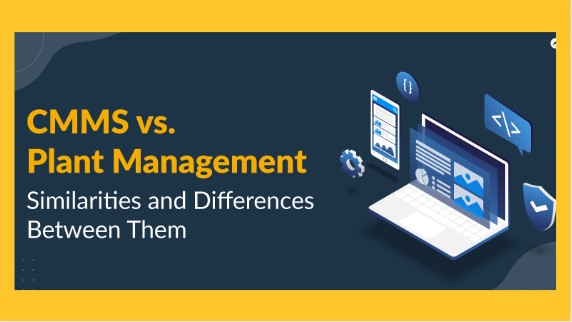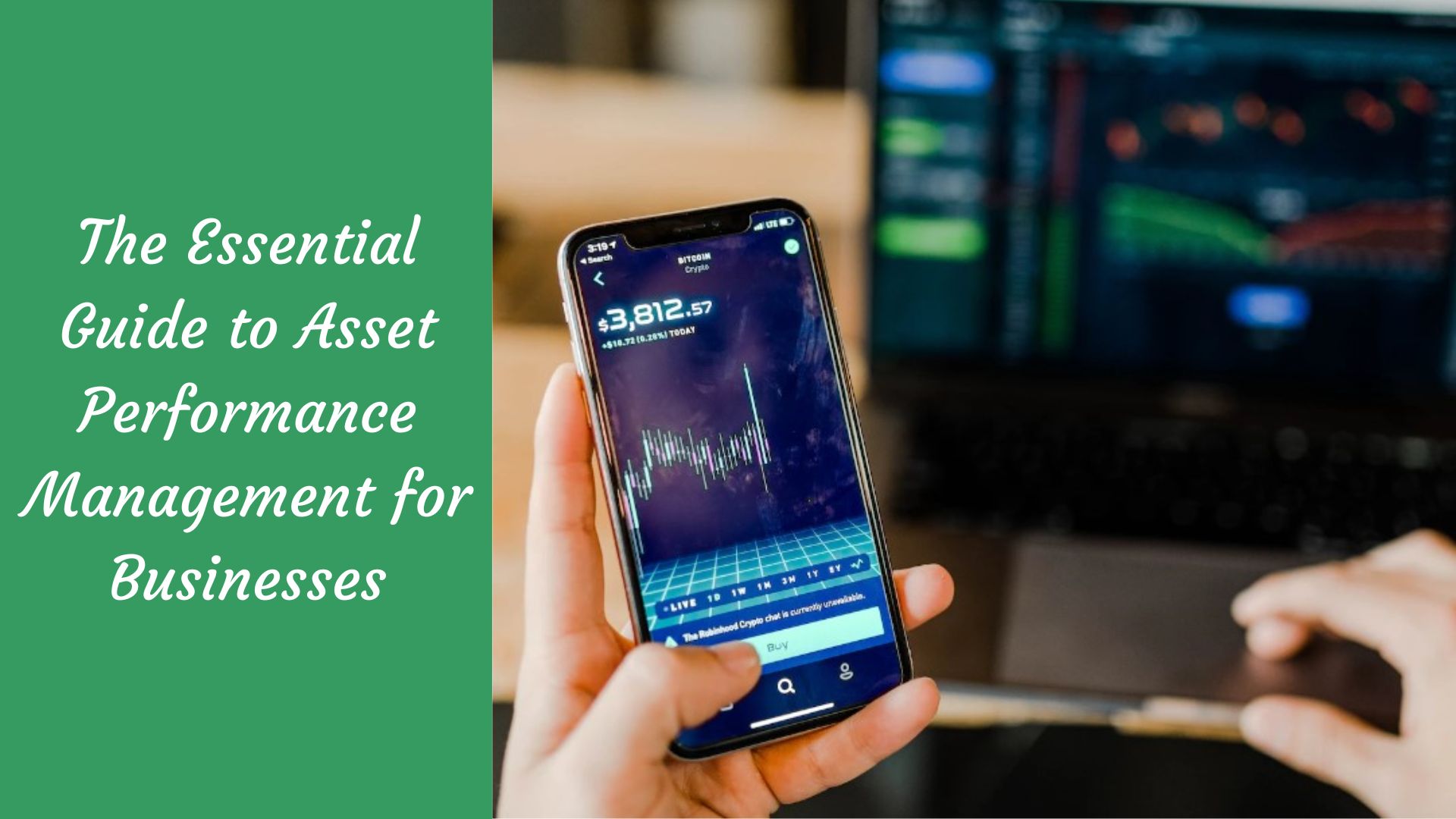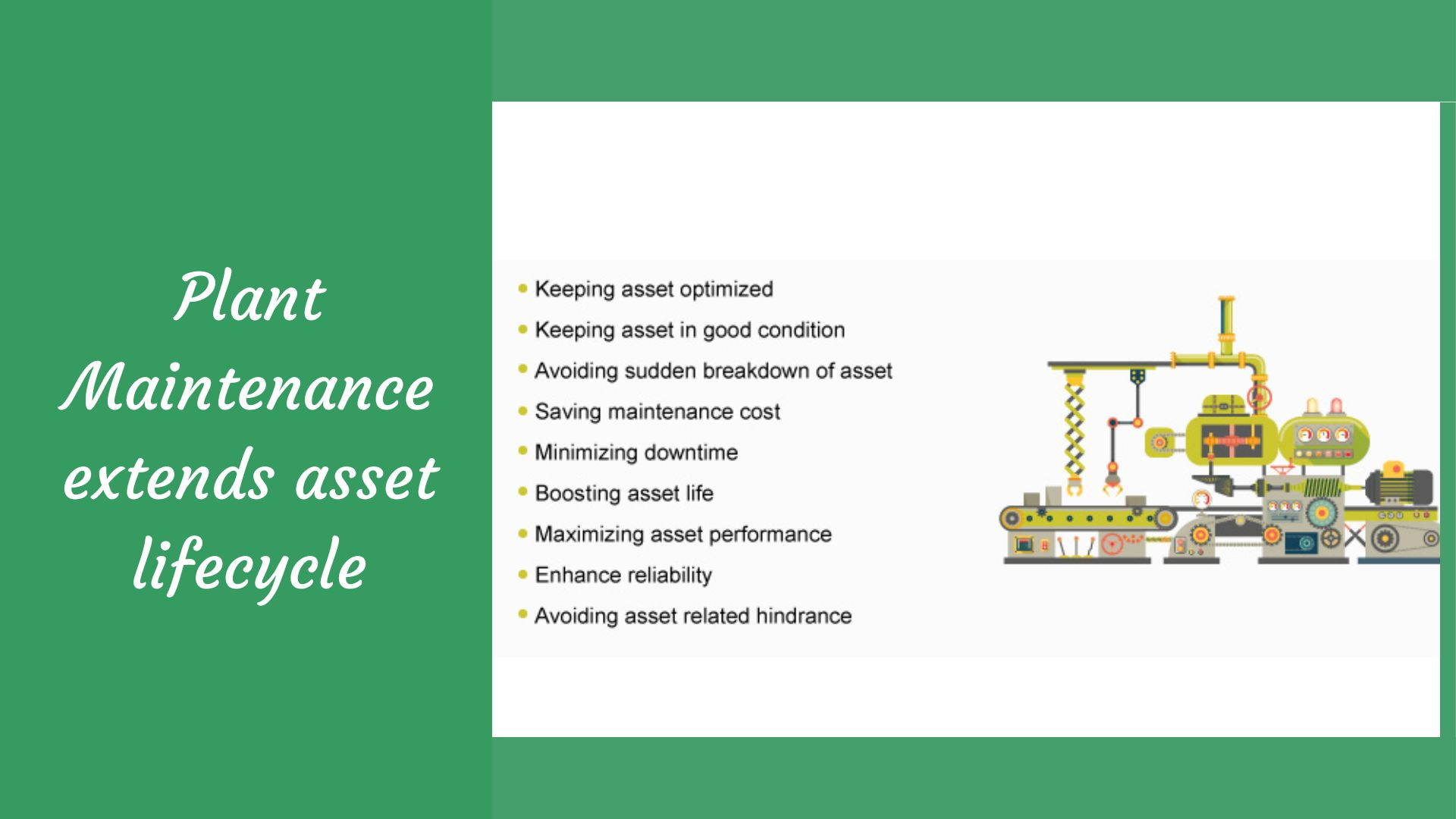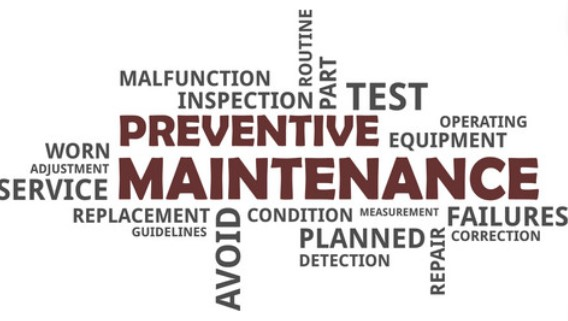
Plant Management Software Vs CMMS - How are they different?
Pratik Lohiya |
27 Feb 2024 |
07:42 AM
- Understanding Plant Management Software and CMMS
- Importance of Effective Maintenance Systems
- What Is Plant Management Software?
- Benefits of Implementing Plant Management Software Systems
- What Is CMMS?
- Core Features and Components
- Advantages of Using CMMS in Maintenance Operations
- Exploring Different Types of Maintenance Software
- Understanding Similarities Between Plant Management Software and CMMS
- Exploring Differences Between Plant Management Software and CMMS
- Choosing the Right Maintenance Software for Your Needs
- Evaluating Your Organization's Requirements and Objectives
- CMMS vs. Plant Management Software: A Detailed Comparison
- Pros and Cons of Each System
- Conclusion

The Essential Guide to Asset Performance Management for Businesses
Kirti Prakash 10 May 2024 | 16:33 PMTransform the way you manage asset performance with our advanced Asset Performance Management software. Designed to optimize the lifespan and efficiency of your assets, this software empowers businesses to enhance operational reliability and reduce do...
In the rapidly evolving industrial landscape, the effective management of assets and maintenance operations is paramount for the success of any organization. Two key systems that play a pivotal role in this regard are Plant Management Software and Computerized Maintenance Management Systems (CMMS). These software systems are designed to streamline and optimize maintenance processes, ensuring the reliability and longevity of critical assets.
Understanding Plant Management Software and CMMS
Plant Management Software is a comprehensive solution tailored to meet the unique needs of industrial plants and facilities. It encompasses various functionalities such as enterprise asset management, inventory management, and maintenance scheduling.
On the other hand, Computerized Maintenance Management Software is a specialized software system focused specifically on maintenance management tasks. It facilitates the planning, execution, and tracking of maintenance activities, from work order generation to asset performance analysis.
Importance of Effective Maintenance Systems
Effective maintenance systems, such as Plant Management Software and CMMS, are indispensable for organizations across industries. They enable proactive maintenance strategies, reducing downtime and enhancing asset performance.
By centralizing maintenance data and automating workflows, these systems empower maintenance teams to make informed decisions and optimize resource allocation. Ultimately, investing in robust maintenance systems translates to lower maintenance costs, improved asset reliability, and increased operational efficiency.
In the following sections, we'll delve deeper into the key features and benefits of Plant Management Software and CMMS, exploring their respective roles in modern maintenance management.
What Is Plant Management Software?

Overview and Definition
Plant Management Software (PMS) is a sophisticated digital solution engineered to streamline the management of assets and maintenance operations within industrial plants and facilities. It serves as a centralized platform for managing various aspects of entire asset life cycle, maintenance activities, and resource allocation.
Key Features and Capabilities
Plant Management Software offers a comprehensive suite of features designed to enhance operational efficiency and asset performance. These features typically include:
Enterprise Asset Management (EAM): Comprehensive tracking and management of physical assets throughout their lifecycle, from procurement to disposal.
Maintenance Management: Streamlined scheduling, execution, and tracking of maintenance tasks, including preventive maintenance and work order management.
Inventory Management: Efficient tracking and optimization of spare parts and inventory levels, ensuring timely availability for maintenance activities.
Asset Performance Monitoring: Real-time monitoring of asset health and performance metrics to identify potential issues and optimize maintenance strategies.
Enterprise Resource Planning (ERP) Integration: Seamless integration with ERP systems for enhanced data visibility and alignment with organizational processes.
Benefits of Implementing Plant Management Software Systems
Implementing Plant Management Software offers a multitude of benefits for organizations seeking to optimize their maintenance operations:
Improved Asset Reliability: Proactive maintenance strategies and real-time monitoring capabilities lead to increased asset reliability and uptime.
Reduced Maintenance Costs: Efficient resource allocation and preventive maintenance scheduling result in lower maintenance costs and asset's entire lifecycle
Enhanced Productivity: Streamlined workflows and automated processes enable maintenance teams to work more efficiently, reducing downtime and improving productivity.
Compliance Adherence: Plant Management Software ensures regulatory compliance by facilitating accurate record-keeping and audit trails.
Plant Management Software is a powerful tool that empowers organizations to achieve optimal asset performance, reduce maintenance costs, and drive operational excellence.
What Is CMMS?

Definition and Functionality
CMMS, or Computerized Maintenance Management System, is a software solution designed to streamline and optimize maintenance management processes within an organization. It provides a centralized platform for managing maintenance activities, work orders, and asset information.
Core Features and Components
CMMS software typically includes a range of core features and components essential for effective maintenance management:
Work Order Management: Creation, assignment, and tracking of work orders for maintenance tasks, ensuring timely resolution of issues.
Preventive Maintenance Scheduling: Automated scheduling of preventive maintenance tasks based on predefined intervals or condition-based triggers, reducing the risk of equipment failures and downtime.
Asset Maintenance Tracking: Comprehensive tracking of asset maintenance history, including repairs, inspections, and maintenance costs.
Inventory Management Software: Management of spare parts and inventory levels to ensure availability for maintenance activities while minimizing stockouts and excess inventory.
Reporting and Analytics: Generation of maintenance reports and performance analytics to track key metrics, identify trends, and make data-driven decisions.
Advantages of Using CMMS in Maintenance Operations
The adoption of CMMS software offers several advantages for organizations looking to streamline their maintenance operations:
Improved Efficiency: CMMS streamlines maintenance workflows, automates repetitive tasks, and reduces paperwork, leading to increased efficiency and productivity within maintenance teams.
Enhanced Asset Reliability: By implementing preventive maintenance schedules and tracking asset health, CMMS helps organizations maximize asset uptime and reliability, minimizing unplanned downtime.
Cost Savings: CMMS software enables better resource allocation, optimized inventory management, and proactive maintenance strategies, resulting in reduced maintenance costs and extended asset lifespan.
Regulatory Compliance: CMMS facilitates compliance with regulatory requirements by maintaining accurate maintenance records, audit trails, and documentation of maintenance activities.
Exploring Different Types of Maintenance Software
Enterprise Asset Management System (EAM)
EAM software focus on managing the entire lifecycle of physical assets within an organization. They go beyond basic maintenance tasks to include aspects such as asset acquisition, depreciation tracking, and asset retirement. EAM software enables organizations to optimize asset performance, minimize downtime, and extend asset lifespan through proactive maintenance strategies.
Computer-Aided Facility Management (CAFM) Software
CAFM software is primarily geared towards managing facilities and building maintenance operations. It encompasses functions such as space planning, occupancy management, and maintenance scheduling for facilities infrastructure. CAFM solutions help organizations streamline facility management processes, improve space utilization, and ensure compliance with regulatory requirements.
Property Management Software
Property management software is tailored for managing real estate assets and facilities. It includes features for lease management, tenant tracking, rent collection, and maintenance management for properties. Property management software streamlines property operations, enhances tenant satisfaction, and facilitates efficient maintenance of buildings and amenities.
Asset Performance Management (APM) Solutions
APM solutions focus on optimizing asset performance and reliability through advanced analytics and predictive maintenance capabilities. These solutions leverage data analytics, IoT sensors, and machine learning algorithms for monitoring asset health, predicting failures, and prescribing proactive maintenance actions. APM software enables organizations to track maintenance tasks, optimize asset utilization, minimize maintenance costs, and improve organization's maintenance operations.
Understanding Similarities Between Plant Management Software and CMMS
Asset Management Capabilities
Both PMS and CMMS offer robust asset management functionalities. They provide a centralized repository for storing asset information, including maintenance history, specifications, and criticality. This allows organizations to effectively track and manage their physical assets, ensuring complete asset lifecycle management.
Work Order Management Functionality
Both systems facilitate efficient work order management processes. Whether it's scheduling preventative maintenance tasks, assigning work orders to technicians, or tracking work progress, PMS and CMMS streamline the entire work order lifecycle. This ensures timely resolution of maintenance issues and minimizes asset downtime.
Importance of Preventive Maintenance

Both PMS and CMMS emphasize the importance of preventive maintenance in prolonging asset lifespan and minimizing unplanned downtime. These preventative maintenance management systems enable organizations to schedule routine inspections, lubrications, and replacements based on predefined intervals or condition-based triggers. This proactive approach to maintenance helps prevent costly equipment failures and extends asset life.
Data Collection and Analysis Tools
Both systems offer robust data collection and analysis tools to support informed decision-making. They capture maintenance data in real-time, allowing organizations to analyze trends, identify recurring issues, and optimize maintenance strategies. By leveraging data analytics, PMS and CMMS empower organizations to continuously improve maintenance processes and asset performance.
Exploring Differences Between Plant Management Software and CMMS
While Plant Management Software (PMS) and Computerized Maintenance Management Systems (CMMS) share some common functionalities, there are distinct differences between the two.
Task Prioritization Features
One notable difference lies in the task prioritization capabilities. While CMMS primarily focuses on scheduling and prioritizing maintenance tasks based on factors like urgency and criticality, PMS goes beyond maintenance activities to encompass broader operational tasks within a plant or facility. PMS allows for the prioritization of tasks across various departments, including production, inventory management, and resource allocation, in addition to maintenance-related tasks.
Estimating Software Integration
Another key difference is the integration of estimating software. PMS often integrates with estimating software tools to facilitate cost estimation for projects, tracks maintenance activities, and capital investments within the plant. This enables organizations to accurately forecast and budget for maintenance departments, optimizing financial planning. On the other hand, CMMS system typically focuses on maintenance-related cost tracking and analysis without extensive integration with estimating software solutions.
Reporting Tools and Analytics
CMMS typically offers robust reporting tools and analytics capabilities tailored specifically to maintenance operations. It provides detailed insights into maintenance KPIs, work order completion rates, equipment downtime, and maintenance costs.
In contrast, PMS offers broader reporting and analytics functionalities that encompass not only maintenance but also production, inventory management, and other operational aspects within the plant or facility.
Design and Construction Management
One significant disparity between PMS and CMMS is their involvement in design and construction management. While CMMS primarily focuses on maintenance tasks post-construction, PMS often includes features for managing design and construction projects within a plant or facility. PMS facilitates project planning, resource allocation, and collaboration among stakeholders involved in design and construction activities, ensuring seamless integration between project management and maintenance operations.
While both PMS and CMMS serve to optimize maintenance operations, their differences lie in their scope, integration capabilities, and focus areas within the broader context of plant and facilities management software. Understanding these distinctions is crucial for organizations to choose the most suitable solution to meet their specific needs and objectives.
Choosing the Right Maintenance Software for Your Needs
Factors to Consider When Selecting Between CMMS and Plant Management Software
-
Scope of Maintenance Activities: Evaluate the extent of maintenance tasks your organization needs to manage. If your focus is primarily on maintenance operations, a CMMS solution may suffice.
-
Regulatory Compliance Requirements: Consider your organization's regulatory compliance obligations, particularly in industries with stringent regulations.
-
Asset Management Requirements: Assess your organization's asset management needs, including asset tracking, maintenance history tracking, and lifecycle management.
-
Risk Management: Evaluate the software's ability to support risk management processes, such as identifying potential hazards, assessing risks, and implementing preventive measures.
Evaluating Your Organization's Requirements and Objectives
Before making a decision, thoroughly assess your organization's maintenance management requirements and objectives. Consider factors such as the size and complexity of your maintenance operations, budget constraints, scalability needs, and long-term strategic goals.
Engage key stakeholders, including maintenance managers, IT professionals, and department heads, to gather input and ensure alignment with organizational objectives
CMMS vs. Plant Management Software: A Detailed Comparison
Functionalities and Use Cases
CMMS focuses primarily on maintenance management tasks, such as work order generation, preventive maintenance scheduling, and asset tracking. It is ideal for organizations looking to streamline maintenance operations and optimize asset reliability.
On the other hand, Plant Management Software (PMS) offers broader functionality beyond maintenance, including production planning, inventory management, and resource allocation. PMS is suitable for organizations seeking comprehensive management of plant operations, from maintenance to production and beyond.
Pros and Cons of Each System
CMMS:
-
Pros: Specialized in maintenance management, robust maintenance scheduling capabilities, detailed asset tracking.
-
Cons: Limited functionality beyond maintenance tasks, may not meet broader plant management needs.
Plant Management Software:
-
Pros: Comprehensive plant management capabilities, integration with production and inventory systems, holistic view of plant operations.
-
Cons: Higher cost and complexity, may include features unnecessary for some organizations focused solely on maintenance management.
The choice between CMMS and Plant Management Software depends on the specific needs and objectives of the organization, with CMMS offering specialized maintenance management functionality and PMS providing broader plant management capabilities.
Benefits of CMMS
Improved Asset Uptime
CMMS enhances asset reliability by facilitating preventive maintenance scheduling, reducing unplanned downtime.
Streamlined Maintenance Operations
CMMS automates workflows, work order management, and inventory tracking, optimizing maintenance processes.
Enhanced Compliance and Regulatory Adherence
CMMS ensures compliance with regulatory standards by maintaining accurate maintenance records and facilitating audit trails.
Benefits of Plant Management Software
Comprehensive Plant Lifecycle Management
Plant Management Software provides end-to-end enterprise asset management of plant operations, from asset maintenance to production planning and beyond.
Efficient Resource Allocation and Optimization
It enables organizations to allocate resources effectively, optimizing workforce and inventory utilization.
Seamless Integration with EAM software systems
PMS seamlessly integrates with EAM systems, providing a holistic view of asset health and performance across the organization.
Conclusion
The choice between Computerized Maintenance Management Systems (CMMS) and Plant Maintenance Software hinges on the unique needs and objectives of each organization. CMMS specializes in maintenance management tasks, offering features such as work order generation, preventive maintenance scheduling, and asset tracking.
It excels in enhancing asset uptime, streamlining maintenance operations, and ensuring compliance with regulatory standards. On the other hand, PMS provides broader functionality beyond maintenance, encompassing production planning, inventory management, and resource allocation. It facilitates entire asset lifecycle management, efficient resource optimization, and seamless integration with EAM system.
Both CMMS and PMS offer distinct benefits that can significantly impact an organization's maintenance and operational efficiency. While CMMS is ideal for organizations solely focused on maintenance management, PMS is better suited for those seeking holistic plant management solutions. Ultimately, the decision should be guided by factors such as the scope of maintenance operations, regulatory compliance requirements, and long-term strategic objectives.
Regardless of the choice, implementing the right maintenance software solution is essential for driving operational excellence, maximizing asset reliability, and achieving regulatory compliance. By carefully evaluating the functionalities, use cases, and benefits of CMMS and PMS, organizations can make informed decisions that align with their specific needs and objectives.
With the right maintenance software in place, organizations can optimize maintenance operations, enhance asset performance, and ultimately, drive business success in today's competitive landscape.